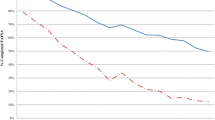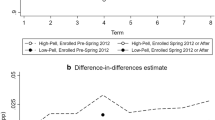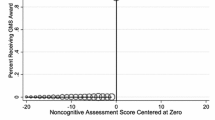Abstract
Federal and state student financial aid programs have increased substantially in past years. Such programs have clearly provided greater access to postsecondary education for low income and minority students.
However, data recently collected in Los Angeles indicate that additional financial aid may have a diminishing impact on increasing access. The Los Angeles study, commissioned by the California Legislature, revealed that low levels of academic achievement, inadequate information, and inflexible admission policies are greater barriers to college for the poor than financial need.
Educational opportunity programs, which provide counseling, tutoring, and information services, should become increasingly important in addressing nonfinancial barriers. Yet such programs are often politically unattractive to legislators and administrators who view student grant programs as simpler and less costly.
Similar content being viewed by others
References
Astin, A. (1975). Preventing Students From Dropping Out. San Francisco: Jossey-Bass.
Fetters, W. (1975). National longitudinal study of the high school class of 1972: Student questionnaire and test results. National Center for Educational Statistics, report 75-208.
Fuller, B. (1975) Unequal Access to College: Postsecondary Opportunities and Choices of High School Graduates. Sacramento, Calif.: California Legislature.
Gordon, E. W. (1975). Opportunity Programs for the Disadvantaged in Higher Education. Washington, D.C.: American Association for Higher Education.
Higher education and national affairs. (1976). Washington, D.C.: American Council on Education.
Knoell, D. M. (1976). Through the open door: A study of patterns of enrollment and performance in California's community colleges. Sacramento, Calif.: California Postsecondary Education Commission.
Los Angeles city unified school district. (1975). Follow-up study of Los Angeles city 1973 high school graduates. Report no. 346. Los Angeles.
Medsker, L., and Trent, J. (1968). “Beyond High School.” San Francisco: Jossey-Bass.
Peterson, R.E., and Hefferlin, J. B. (1975). Postsecondary alternatives: To meet the needs of California adults. Sacramento, Calif.: California Legislature.
Tillery, D. (1975) Distribution and differentiation of youth: A study of transition from school to college. Cambridge, Mass.: Ballinger Publishing.
Winkler, K. (1975a). States continue to increase funds for student aid. Chronicle of Higher Education, November 17.
Winkler, K. (1975b). Black youths share of enrollment grows. Chronicle of Higher Education, December 15.
Author information
Authors and Affiliations
Rights and permissions
About this article
Cite this article
Fuller, B. Increasing student financial aid programs: A misdirected means of expanding access?. Res High Educ 5, 27–38 (1976). https://doi.org/10.1007/BF00991958
Issue Date:
DOI: https://doi.org/10.1007/BF00991958




